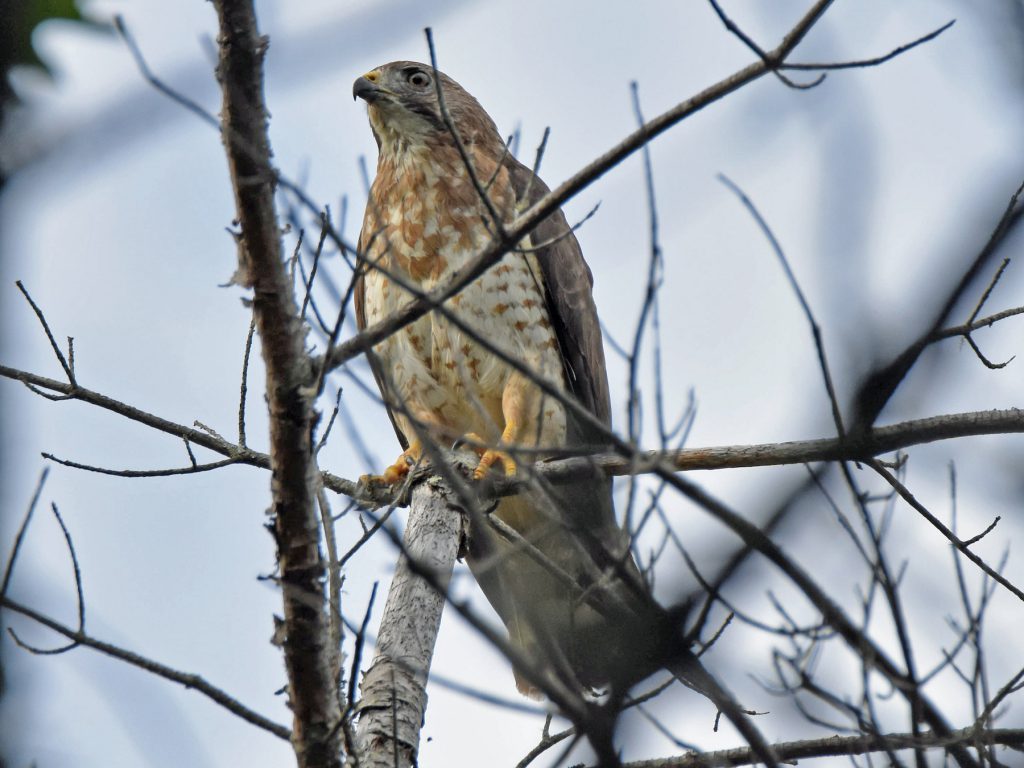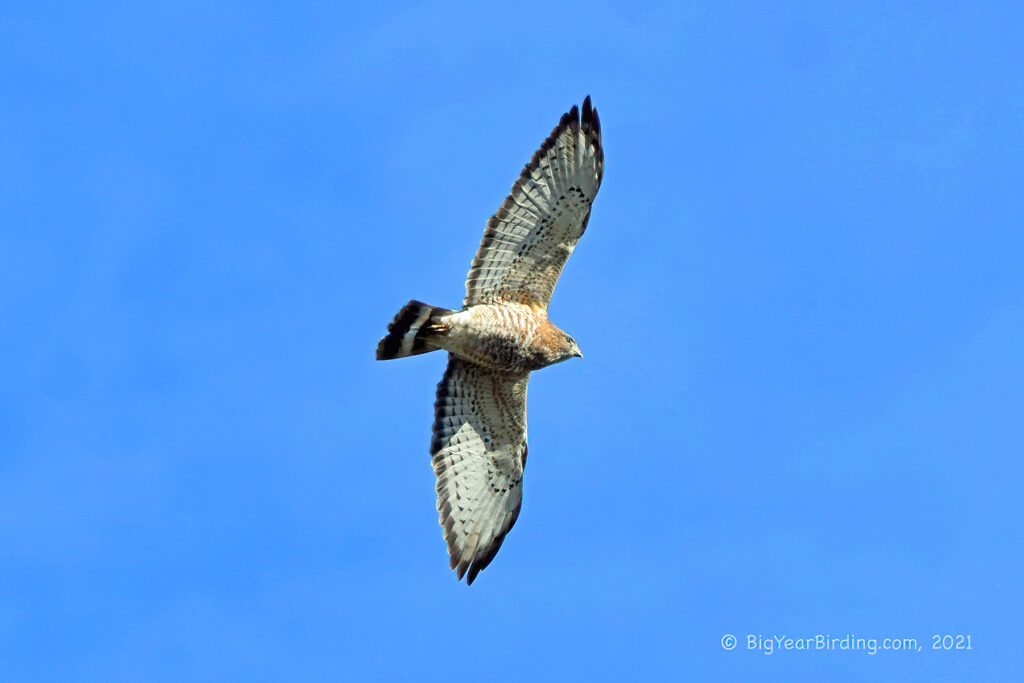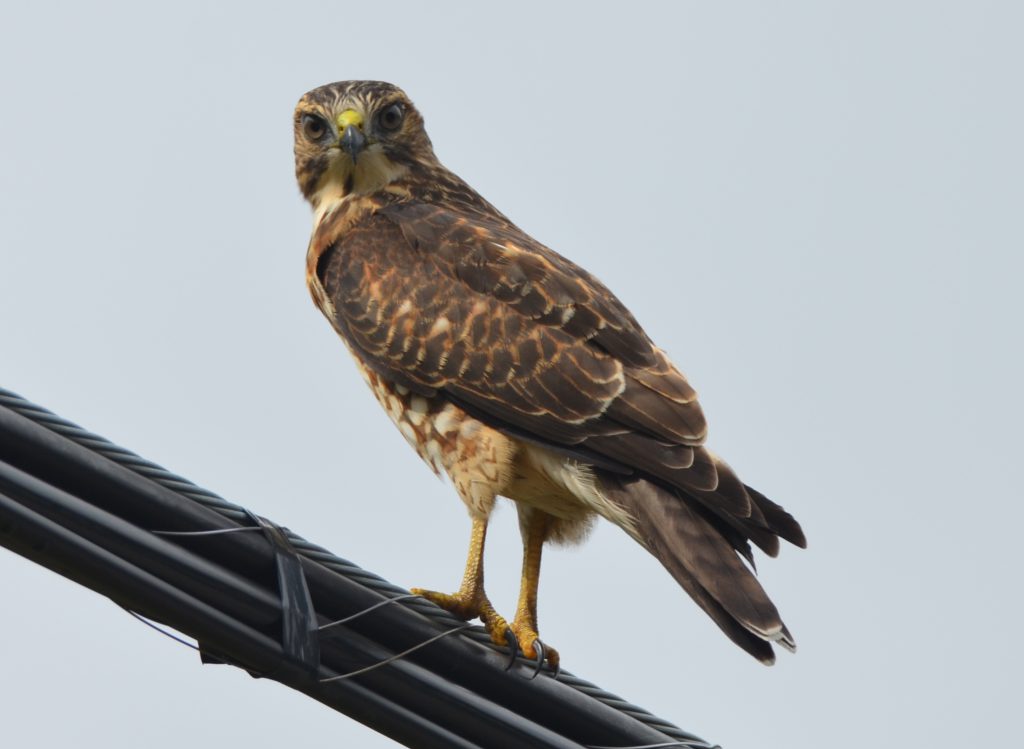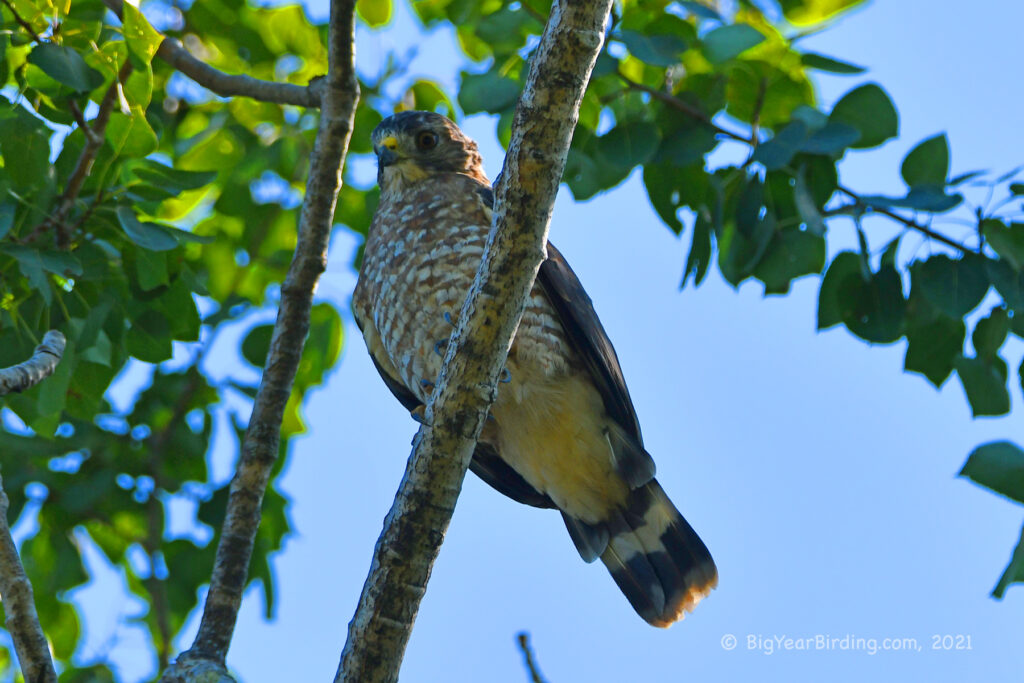
The Broad-winged Hawk (Buteo platypterus) is a medium-sized raptor that breeds in eastern North America, from southern Canada to the Gulf of Mexico. This bird of prey is about 13-17 inches long and has a wingspan of 32-39 inches. Adults typically weigh between 9-20 ounces, with females being larger than males.

The Broad-winged Hawk is easily recognizable by its distinctive plumage, with a reddish-brown back and wings, a white throat and belly, and a dark band on its tail. The wings are also notable for their broadness, which gives this bird its name. Juvenile birds have a more mottled appearance, with streaked undersides and less distinct wing markings.
This species is known for its impressive migration, which takes place in the fall. Broad-winged Hawks are highly social and form flocks of up to several thousand individuals during migration. These flocks are known as “kettles” and can be seen spiraling upward on thermal currents as they make their way south to their wintering grounds in Central and South America.
During the breeding season, Broad-winged Hawks prefer forested areas with tall trees and open understories. They typically nest in the canopy of deciduous trees, building their nests from sticks and lining them with softer materials such as moss and lichen. The female lays 2-3 eggs, which are incubated for around 30 days. Both parents take turns incubating the eggs and caring for the young.

Broad-winged Hawks feed primarily on small mammals such as mice, voles, and chipmunks, as well as birds, snakes, and insects. They hunt by perching on a high vantage point and swooping down on their prey. During migration, they may also be seen catching insects in mid-air. While not as well-known as some of North America’s other raptors, the Broad-winged Hawk is a fascinating bird with unique behaviors and characteristics.

